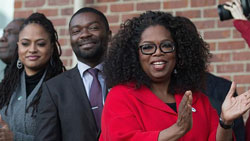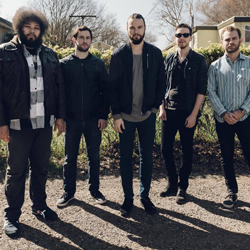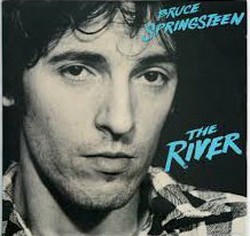When you turn on the televi- sion, you will find a whole host of reality TV to enjoy. Some have wide appeal (“American Idol,” “America’s Got Talent”), are edu- cational (“Pawn Stars”), or are just plain odd (“My Strange Ad- diction”).
However, while reality TV seems geared to this medium, it has found a way to be explored through the comic book pages. These books aren’t copying real- ity TV, but are using the platform as an interesting background for superhero tales.
One of the more recent comics to utilize the popularity of real- ity TV is “America’s Got Powers” from Image Comics, written by Jonathan Ross and illustrated by Bryan Hitch. The series focuses on Tommy Watts as he enters a super competition where vari- ous young heroes compete with one another using their powers to become rich and famous. They battle against each other on the hit show called “America’s Got Pow- ers.”
While talking to comicbookre- sources.com, Hitch mentioned how the idea for the series evolved to become more about the char- acters and the story rather than about the show itself. He said, “Jonathan’s original one line pitch was ‘X-Factor for Super Heroes’ and it was a great idea, but as we started putting a story to that idea, it became much less about the show. Once we put living breath- ing characters into the scenario of the show, it became their story, not the show’s story, and the show became an environment.”
It seems as if the idea of he- roes fighting on a reality TV show struck a chord as a second printing has been announced via a press release on comicbookre- sources.com.
However, competitions haven’t been the only way for the comic book medium to include real- ity TV in its pages. Sometimes, it could be just a real show about heroes trying to fight the good battle, which is what Marvel did when they redeveloped their ‘90s superhero team, New Warriors.
Back in their heyday, the New Warriors consisted of teenage he- roes: Night Thrasher, Speedball, Marvel Boy, Nova, Namorita and Firestar. However, it wouldn’t be until their third volume via a six- issue miniseries that these super- heroes became recognized faces.
Written by Zeb Wells and drawn by Skottie Young, “New War- riors” Volume Three included es- tablished members Nova, Speed- ball, Night Thrasher and Namorita as well as new ones like Microbe and Debrii. In this new series, the New Warriors are featured on a reality TV show as they travel around America looking for vil- lains to defeat. The exciting story by Wells was nicely matched by Young’s animated art throughout this miniseries.
In an interview with marvel. com, Wells mentioned some thoughts about working on this series alongside his artist. “… I’m immensely proud of the work Skottie Young and I did on ‘New Warriors.’ I feel like Skottie and I have just begun to tap what we’re capable of as a duo. We both feel that there is so much more to dis- cover and accomplish, and our plan is to work together as much as possible and shame whatever we’ve done together in the past,” Wells said.
While this was a new chapter in the lives of the New Warriors, it would soon take a dark turn. In the opening pages of the mega- event, “Civil War,” the New War- riors are seen filming their show while trying to capture the super- power villain Nitro. As Speed- ball corners Nitro, he decides to explode and destroys part of the town they are in as well as this incarnation of the New Warriors. (The New Warriors would return following Civil War by opposing the law of then-S.H.I.E.L.D. di- rector, Tony Stark/Iron Man.)
Although comic books have dabbled with reality TV based storylines, sometimes the trans- fer has been the opposite as com- ic culture comes to televisions. AMC presented “Comic Book Men,” which featured employ- ees at Jay and Silent Bob’s Secret Stash in Red Bank talking about comics while selling and/or buy- ing different comics, toys and other memorabilia.
However, it wasn’t the first time TV blended with comics to produce a show that appeals to all. Another program was “Who Wants to Be A Superhero,” hosted by Stan Lee, featuring a variety of average citizens who desired to be heroes.
On the show, they went through a number of challenges until only one was left as the victor. In ad- dition to being the winner, the top hero was written into his own comic book by Lee and published by Dark Horse Comics. “Who Wants to Be A Superhero” ran on Syfy for two seasons (2006-07), both hosted by Lee.
Prior to season two, Lee talked to superherohype.com about why his show stands out among all the rest. Lee said, “…I think, re- ally for better or worse, there is no show particularly like ‘Who Wants to Be a Superhero?’ So I think the novelty of it alone is enough to grab some viewers. Hopefully if the characters them- selves are interesting enough and colorful enough, and if they say and do unexpected things, I think that is another grabber.”
Reality TV is something that has become a part of our culture, whether you like it or not. How- ever, these comics and shows demonstrate that it doesn’t have to remain in only one medium.
Since we live in a reality where superheroes don’t exist, it does pose an interesting idea of what such a society would look like if they did. Who knows? Maybe shows like “America’s Got Pow- ers” or “New Warriors” would be as popular as “American Idol” or “The Amazing Race.” The answer could be just a channel click away.




